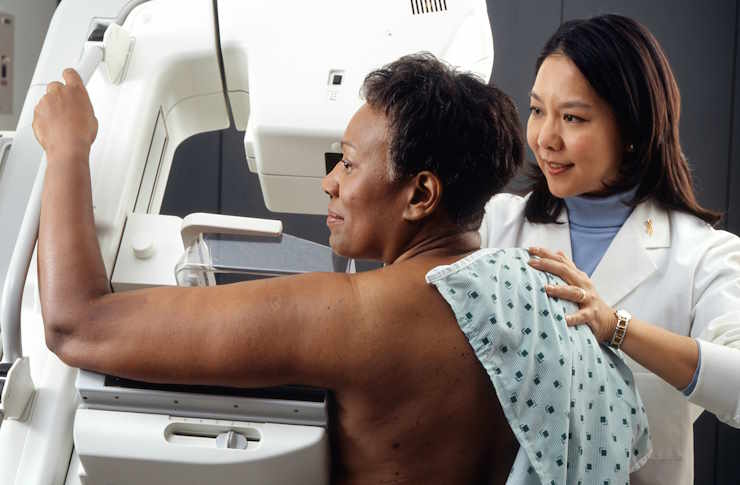Triple Negative Breast Cancer: Key Symptoms and Early Signs
Triple Negative Breast Cancer (TNBC) is an aggressive form of breast cancer that does not respond to common hormone therapies. This article explains the main symptoms and early signs, reviews treatment considerations, and highlights the importance of awareness for women’s health.

Common Signs and Physical Symptoms of TNBC
Triple Negative Breast Cancer often presents with symptoms similar to other types of breast cancer. However, TNBC tends to be more aggressive and fast-growing, which may cause symptoms to appear and progress more rapidly. The most common physical signs include a new lump or mass in the breast that feels hard, irregular in shape, and is often painless. Unlike some other breast cancers, TNBC lumps may develop and grow quickly, sometimes within weeks or months. Additional symptoms may include skin changes over the breast such as dimpling, redness, or an orange-peel texture (peau d’orange), nipple retraction or inversion, nipple discharge, and persistent breast pain or tenderness not associated with menstruation.
Another significant indicator is swelling of part or all of the breast, even without a distinct lump. This can sometimes be accompanied by an unusual warmth in the affected area. In some cases, lymph nodes in the armpit region may become enlarged as the cancer spreads beyond the breast tissue. It’s important to note that many women with TNBC do not experience any noticeable symptoms in the early stages, which underscores the importance of regular screenings.
Early Indicators That May Signal TNBC
While TNBC can occur at any age, it disproportionately affects younger women under 50 years of age. This differs from hormone receptor-positive breast cancers, which more commonly occur in postmenopausal women. One of the earliest indicators may be a rapidly growing lump that appears between routine mammograms. Unlike some slower-growing cancers, TNBC tumors can sometimes double in size in just a few weeks.
Changes in breast shape, size, or appearance can also be early signals that warrant immediate medical attention. Some women report a feeling of heaviness in one breast or notice asymmetry that wasn’t present before. Skin changes may appear subtly at first—perhaps slight thickening or dimpling in a small area that progressively worsens. Any unexplained changes in the breast, particularly those that persist beyond a menstrual cycle, should be evaluated by a healthcare professional.
It’s worth noting that TNBC is more likely to spread beyond the breast compared to other types of breast cancer, sometimes making metastatic symptoms the first noticeable signs. These may include unexplained weight loss, fatigue, bone pain, or persistent headaches if the cancer has spread to other parts of the body.
Understanding Risk Factors and Prevention
Several risk factors increase the likelihood of developing TNBC. Women of African-American or Hispanic descent have a higher incidence of TNBC compared to women from other ethnic backgrounds. Younger women, particularly those under 40, face a greater risk of developing this type of breast cancer. Genetic factors also play a significant role—individuals with mutations in the BRCA1 gene have a substantially increased risk of developing TNBC. Approximately 70% of breast cancers that develop in people with a BRCA1 mutation are triple-negative.
Other risk factors include having a first pregnancy after age 30, not breastfeeding, and obesity, particularly in younger women. A family history of breast cancer, especially TNBC, also increases risk. Unlike some other types of breast cancer, hormone-related factors such as early menstruation or late menopause do not seem to significantly increase TNBC risk.
Prevention strategies focus on modifiable risk factors. Regular physical activity, maintaining a healthy weight, limiting alcohol consumption, and avoiding smoking may help reduce the risk. For those with a strong family history or known genetic mutations, preventive measures might include more intensive screening, prophylactic medications, or in some high-risk cases, preventive surgery. However, because many TNBC risk factors are not modifiable, early detection remains the most effective strategy for improving outcomes.
Diagnostic Procedures and Testing
When TNBC is suspected, healthcare providers employ several diagnostic procedures to confirm the diagnosis. The process typically begins with a clinical breast examination, followed by imaging tests such as mammography, ultrasound, or magnetic resonance imaging (MRI). However, it’s worth noting that TNBC may be more difficult to detect on mammograms compared to other types of breast cancer, particularly in women with dense breast tissue.
A definitive diagnosis requires a biopsy, where a sample of breast tissue is removed for laboratory analysis. This can be done through fine needle aspiration, core needle biopsy, or surgical biopsy. The tissue sample undergoes pathological examination to determine not only if cancer is present but also its specific type. Immunohistochemical testing is conducted to check for the presence of estrogen receptors, progesterone receptors, and HER2 protein. TNBC is diagnosed when all three tests come back negative.
Additional testing may include genomic testing to analyze the tumor’s genetic makeup and help determine the most appropriate treatment approach. Blood tests may be ordered to assess overall health and prepare for potential treatments. If cancer is confirmed, further imaging such as CT scans, bone scans, or PET scans may be recommended to determine if the cancer has spread beyond the breast and lymph nodes.
This article is for informational purposes only and should not be considered medical advice. Please consult a qualified healthcare professional for personalized guidance and treatment.




